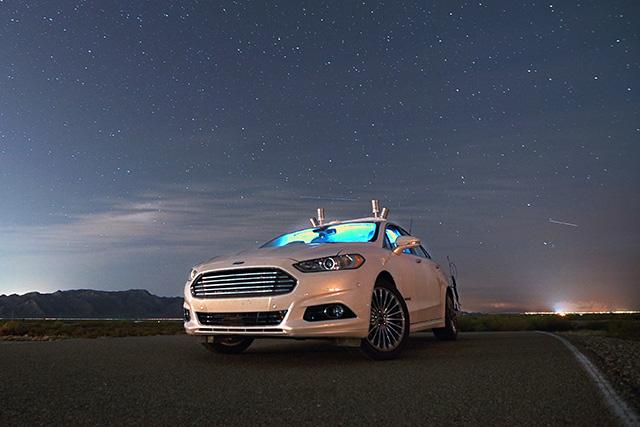-
Tips for becoming a good boxer - November 6, 2020
-
7 expert tips for making your hens night a memorable one - November 6, 2020
-
5 reasons to host your Christmas party on a cruise boat - November 6, 2020
-
What to do when you’re charged with a crime - November 6, 2020
-
Should you get one or multiple dogs? Here’s all you need to know - November 3, 2020
-
A Guide: How to Build Your Very Own Magic Mirror - February 14, 2019
-
Our Top Inspirational Baseball Stars - November 24, 2018
-
Five Tech Tools That Will Help You Turn Your Blog into a Business - November 24, 2018
-
How to Indulge on Vacation without Expanding Your Waist - November 9, 2018
-
5 Strategies for Businesses to Appeal to Today’s Increasingly Mobile-Crazed Customers - November 9, 2018
Ford’s autonomous Fusion can see in the dark without headlights
Ford recently tested the capability at its “Proving Ground” in Arizona, challenging one of its research vehicles to navigate pitch black desert roads with no headlights – a task that would be pretty much impossible, not to mention super risky, for a human driver.
Advertisement
The company has also tested its cars on snow-covered roads and even trained the systems to drive like a highly trained driver would under bad road conditions.
Automaker Ford is developing LiDAR (Light Detection and Ranging) systems for use in its autonomous cars, enabling the vehicles to “see” in complete darkness. Ford acknowledged this, saying that having all three technologies present is the best option, but the research shows that LiDAR “can function independently on roads without stoplights”.
“Thanks to LiDAR, the test cars aren’t reliant on the sun shining, nor cameras detecting painted white lines on the asphalt”, said Jim McBride, Ford technical leader for autonomous vehicles.
Navigating in the dark, the Ford cars use high-resolution 3D maps, complete with information about the road, road markings, geography, topography and landmarks like signs, buildings and trees. Based on this data, the autonomous vehicle is then able to create a 3D map of its surroundings at all times.
“[Testing the car] in complete darkness basically took the camera completely out of the equation”, Randy Visintainer, Ford’s director of autonomous vehicle development, told Re/code.
While Ford’s driverless auto project is not as substantial as those of Google – the Alphabet owned company has tested its vehicles over more than 1.3 million miles – it has been testing its cars in a variety of conditions. “Sure enough, it stayed precisely on track along the winding roads”. During the test, Ford engineers wore night-vision goggles, monitoring the Fusion’s path via interior and exterior views, while its LiDAR sensors shot out 2.8 laser pulses a second.
By using available technologies like computer vision, Lidar, radar, GPS, traffic reports and other data sources, seeing autonomous cars combining all its resources for increased safety is very exciting.
Advertisement
This advancement is a step forward for making autonomous vehicles more safe, and could eventually help make them ready for use by the general public. The company believes its autonomous cars to be out in the market by 2019.




























